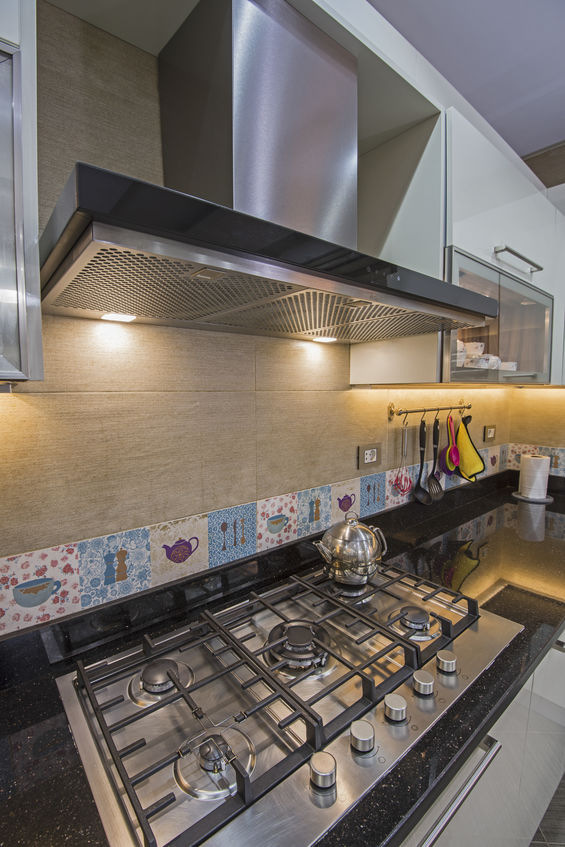Fire Suppression
If the appliances you’re cooking on produce any smoke, grease, your commercial kitchen exhaust hood must be equipped with a fire suppression system. This will let your establishment meet any building and fire safety codes.
Removal of Smoke, Heat, and Grease
You should remove smoke in a commercial kitchen for the health and safety of kitchen staff. Furthermore, smoke not appropriately removed will eventually migrate into the dining room and drive away potential consumers. As with smoke, it’s essential to remove heat from your kitchen to keep staff healthy and safe. Working in an unbearably hot kitchen may cause a host of health problems. Most significantly, removing grease prevents kitchen fires. It becomes a major cleanliness problem with grease isn’t appropriately removed as it can settle on kitchen surfaces and need more cleaning time of staff.

Odor Control
The last thing you want as a restaurant manager or owner is food odors spreading through the restaurant. A commercial kitchen exhaust hood will vent the area and remove those questionable odors from the kitchen and restaurant.
How to select the right commercial kitchen exhaust hood
Before you buy the best commercial kitchen exhaust hood, you need to consider some factors. Below, we are mentioning a few factors that you should consider before you buy any commercial kitchen exhaust hood.
Type 1 and type 2
Type 1: Generally referred to as grease hoods, Type 1 hoods remove condensation, heat, smoke, and other by-products of cooking like grease. These kinds of hoods must be installed at and above all commercial-grade grease or smoke-producing tools including steam jacketed kettles, deep fat fryers, broilers, fry grills, hot top ranges, rotisseries, ovens, barbeques. That is because Type 1 hoods capture the air above appliances. This air contains grease, food particles, and other stuff and must be captured before the air will get exhausted to the exterior through ducts. Furthermore, Type 1 hoods need regular cleaning to prevent expensive and potentially dangerous grease fires.
Type 2: Referred to as condensate hoods, Type 2 hoods collect and then remove moisture, steam, vapor, heat, odors from kitchen appliances that don’t produce grease. This involves general ovens, coffee machines, non-conveying pizza ovens, and commercial dishwashers. Type 2 hoods make a comfortable environment for the kitchen because they remove excess heat from the air. Furthermore, since these kinds of hoods don’t require a grease filter, they are made from standard galvanized duct rather than fully-welded duct used for Type 1 hoods.
Exhaust rate
Exhaust air’s amount removed from your space is expressed as cubic feet per minute, and CFM. The exhaust rate that you need for a commercial kitchen exhaust hood depends on the grease, heat, smoke produced by the cooking appliances you are using and the food type you’re working with. For instance, fatty foods can produce more grease. Open-flame cooking will produce more thermal plumes. All these factors should be considered to calculate the exhaust rate that you need for a commercial kitchen exhaust hood.
Hood design
These are the basic exhaust hood styles and their performance. The right option will depend on your kitchen design and the cooking appliances you are using. Proximity hoods are small hoods mounted in closer proximity to the cooking appliance. Styles can include eyebrow, pass-over, and back-shelf hoods. In several cases, these styles need the least amount of exhaust to be efficient. Wall-mounted canopy hoods, as the name implies, are mounted on the wall and extend over a whole bank of cooking appliances installed against the wall. Wall-mounted canopies are large and need additional exhaust volume than proximity designs.
Physical size and mounting height
Once you know the type, exhaust rate, and design style that you need for the kitchen then you should consider the physical size of the commercial kitchen exhaust hood. Is it the right size to make the capture zone you need for cooking appliances? In most cases, the hood should extend beyond the area where your appliances are installed to keep grease and smoke from escaping into the surrounding places. It is essential that the hood be installed at the correct height. Once again, these decisions will be based on cooking appliances and the foods you’re making. It is another reason that needs you to consult with experts before you will buy the commercial kitchen exhaust hood.
Ventilation design
The ventilation design is as important as the hood itself. The size or shape of your ducting to the outside, the length of your ducting runs, and the number and direction of bends that are required, all have an effect on the efficiency of your commercial kitchen exhaust hood. Long runs and more bends will need a high exhaust rate. Insulation is required when you’re installing a Type 1 hood with a fire suppression system. For ease of maintenance, later on, you will want access doors in the ductwork.
Makeup air is a necessary factor in ventilation design. Think about it: your commercial kitchen exhaust hood is removing a huge volume of air from the kitchen each minute to get rid of all that smoke, heat, odors, grease. The ventilation should replace the air that is removed with fresh air from outside. That is where the makeup air system comes in. Without it, you risk air balance issues that may cause drafts and odors to migrate where you do not want them. For these reasons and many more, designing ventilation for a restaurant needs certain knowledge and expertise. You should make sure to select an HVAC installation and service company with the best skills and experience.
